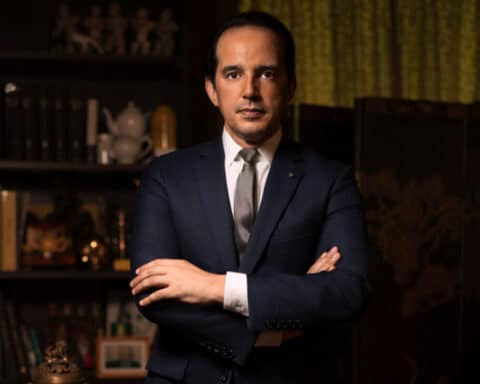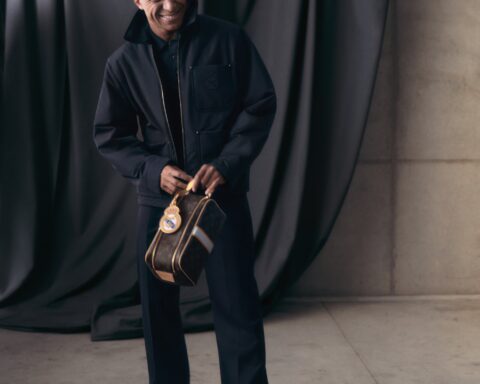OpenAi, Silicon Valley’s tech giant and standard-bearer for generative artificial intelligence, is facing a turning point in its history. Thought up primarily as a non-profit project, Sam Altman’s company is succumbing for good to the commercial sirens, to the point of causing an unprecedented wave of departures and questioning the ethics of its development.
Following its latest fund-raising round of $6.6 billion in early October, OpenAI, parent company of the highly publicized ChatGPT and Dall-E, has seen its valuation double to $157 billion.
Behind this new record, led by Thrive Capital, all would be well in the best of worlds for the company, which has grown from 750 to 1,700 employees… if this capital increase wasn’t overshadowed by the cascade of departures of its most eminent executives, worried about the adoption of commercial status by Sam Altman’s company.
Indeed, it seems that Microsoft, OpenAI’s main backer, which has already invested some $13 million in the tech company, is keen to make its investments profitable.
A questionable change of status
Following its fund-raising, OpenAI finds itself valued at $157 billion, or 40 times its reported sales. The New York Times reported monthly revenues of $300 million in August. The Californian AI nugget anticipates annual sales of around $3.7 billion by 2024, and $11.6 billion next year.
This recent funding may actually be contingent on the company becoming a for-profit entity. Indeed, since its creation at the end of 2015 in San Franscisco, OpenAI has broken down into two structures: a non-profit association whose purpose was to ensure secure and beneficial AI for all, on the one hand, and a capped for-profit subsidiary poised to hold a majority stake.
However, this change is not without consequences for the nature of the developments carried out, the speed of product launches and, above all, the implementation of security measures.
On its blog, OpenAI states that this round of funding should enable the company to develop general-purpose AI (as intelligent as humans).
But at the same time, the company is still not profitable, posting a $5 billion loss this year according to the New York Times. Generative AI models are trained on vast quantities of data to produce text, images and content, which are power-hungry and require particularly expensive, cutting-edge computer chips, such as those designed by Nvidia, a contributor to the fund-raising.
However, Sarah Friar, OpenAI’s CFO, assumes these expenses: “The next model will be bigger, and the next even bigger. This is a capital-intensive business.”
Unprecedented departures
For less than a year now, OpenAI has been experiencing one departure after another. A situation that testifies to the dangers inherent in hypergrowth, sweeping away a stream of newcomers with a very different mindset and leading to the disillusionment of the original craftsmen. In this case, the common denominator of the would-be departures is that they criticize the tech giant and its CEO Sam Altman for their fast-paced business strategy, in defiance of elementary rules of ethics and regulation.
On September 25, one departure in particular caused a stir in the small world of Silicon Valley: that of the “brains behind ChatGPT”, Mira Murati. Hired in 2018, the technology director, who had participated in the development of the ChatGPT conversational robot and the launch of its visual equivalent Dall-E at the end of 2022, chose to jump ship. The American-Albanian engineer, appointed in 2023 as interim CEO following Sam Altman’s lightning dismissal at the request of the Board of Directors, thus swelled the starting line. This follows the departure of engineer and co-founder Ilya Sutskever last May.
While most of these departures have been quiet and consensual, some have been more vocal, such as Miles Brundage’s: he regretted the further dissolution of his AGI readiness team, responsible for the security protocol of a general AI, which he led.
When he left on October 24 , Brundage was most alarmist, declaring “neither OpenAI nor any other cutting-edge lab is ready [for general artificial intelligence], and the world isn’t ready either.”
His reaction is reminiscent of the departure in May of Jan Leike, head of the previous AGI readiness team.
A sign that AI is becoming commonplace
However, OpenAI’s retention difficulties do not mean that the AI hype has come to an end – quite the contrary. According to the experts, this flight of talent is actually a sign of the mass adoption of AI.
The company is no longer alone in its realm, and some of its employees are choosing to set up their own structures or even join competing projects.
Such is the case of John Schulman, who has joined Anthropic, and Mira Murrati, who is about to launch her own AI company.
In the meantime, there are many contenders for AI leadership, with Microsoft developing its own project alongside its financial support for OpenAI, as well as Google, Apple and Elon Musk (Xai).
All these companies are outbidding each other to make the most of their astronomical investments. Not to mention that OpenAI no longer has a monopoly on text-based generative AI, despite the 250 million monthly users of its ChatGPT: Antropic, Meta, Copilot (Microsoft) and even +Grok+ (X, Elon Musk’s company) have jumped on the bandwagon.
Elon Musk, an early contributor to OpenAI, regularly accuses the company of betraying its original mission.
Read also > AI’s revenge: how Elon Musk wants to dethrone Microsoft and Open AI
Featured Photo: Unsplash














